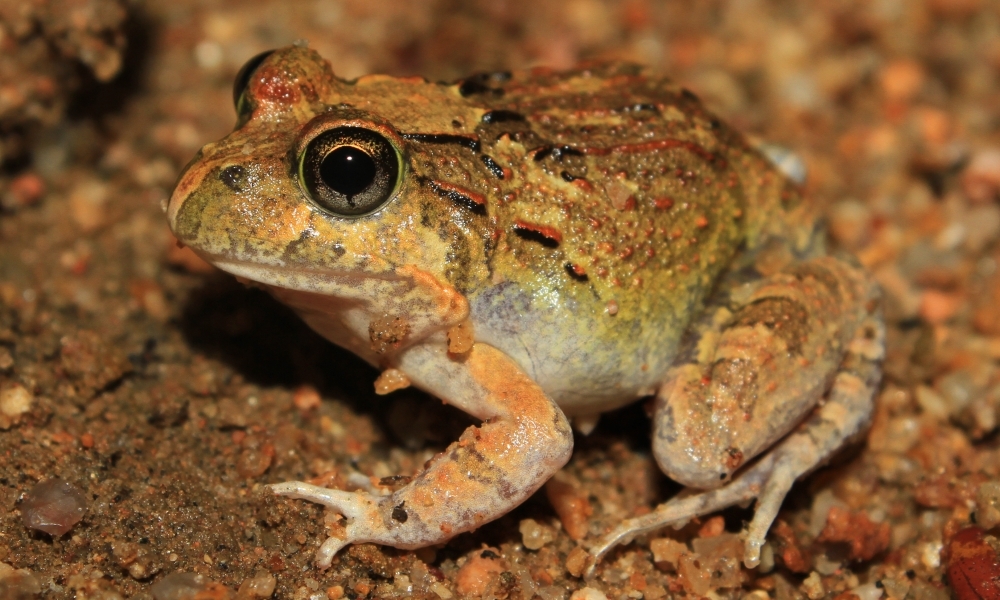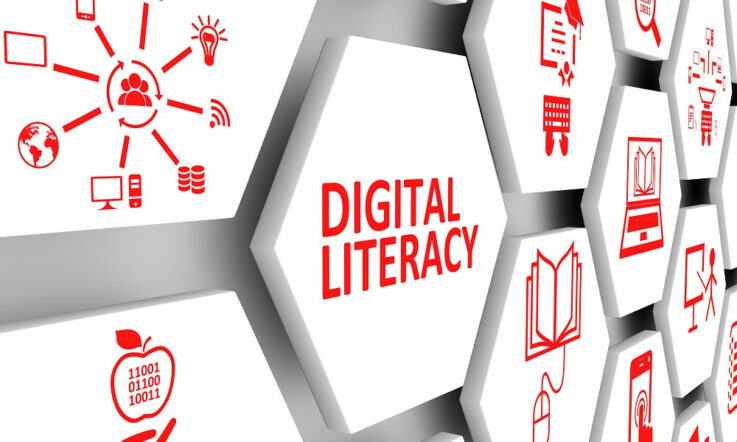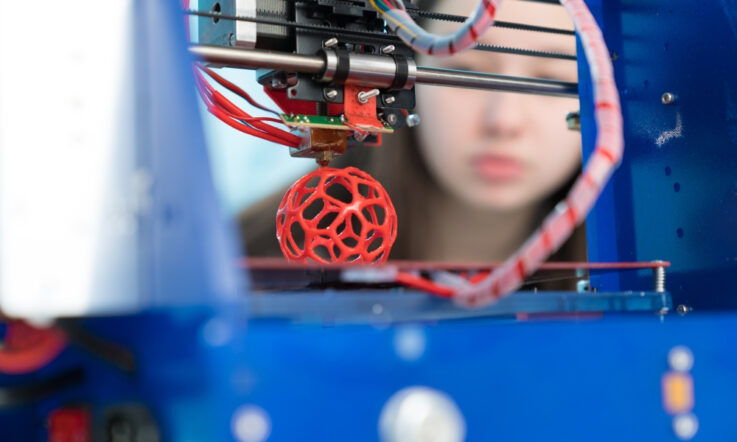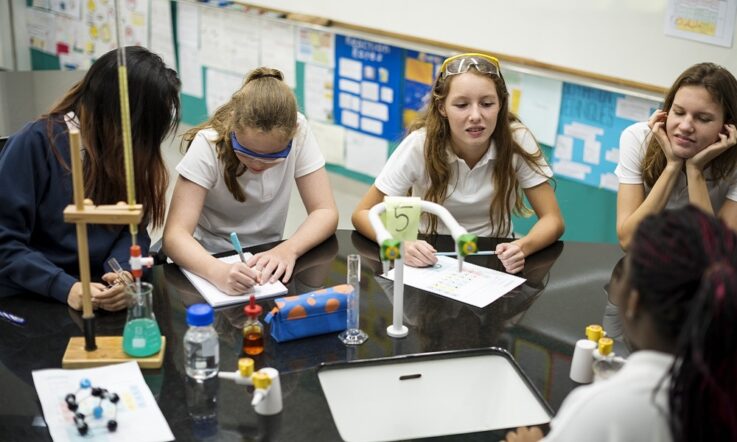If COVID taught us anything, it was that teachers are flexible. The successes and failures of ‘online school’ opened staff up to new ways of teaching and learning; and began a broader discussion of the need for increased digital literacy among our youngest learners.
This year, teachers from Kalkie State School in Bundaberg, Queensland, designed and delivered a pilot STEM (Science, Technology, Engineering, and Mathematics) program. Their inquiry was simple – could STEM work to increase engagement in science and technologies, including an improvement in digital literacy for both staff and students?
As Digital Technologies teacher, I had participated in other STEM programs before, including the STEMx Academy and the Future You campaign, headed by Women in STEM Ambassador, Professor Lisa Harvey-Smith. ‘We know the eight- to 12-year-old age group is critical to longer term interest in STEM careers,’ Harvey-Smith says.
Four classrooms were chosen – a mixture of Grades 4, 5 and 6, all in that eight- to 12-year-old age bracket. Each class had anticipated completing the animal adaptations unit (C2C – Curriculum into the Classroom), so the teachers were familiar with the content traditionally covered in science. Classroom teachers stayed with their classes in a co-teacher role.
The participants were both early career teachers and more seasoned veterans of the teaching field. All were dedicated to improvement and had a range of goals: preparing students for the rigours of high school; considering Indigenous Perspectives and embedding them more naturally into the curriculum; increased engagement in the sciences; and, reducing workload through integration.
Assuming the role of teacher-as-researcher allowed me to meet my goal of continuing professional development. I knew that the project aligned with the National STEM School Education Strategy and felt an urgency to address its goals within my school setting.
STEM careers are key for Australia’s continuing success, with research and development and digital literacy key drivers for economic improvement (Tuffley, 2019) and this project had the potential to steer students towards careers in Science and Technologies.
However, there were concerns this school improvement research would cause disruption to the teaching and learning schedule.
According to Mockler (2014), practitioner research is ethical when it has a transformative intent which leads to action; and where is it able to be operationalised to the benefit of the whole community, rather than to a select group. Mockler’s assertion that researchers and their communities be open to unwelcome truths would also ensure sound critical engagement in our project. We felt that the collaborative nature of the pilot and the team’s commitment to open communication made this an appropriate starting place for research.
As Michael Timms and colleagues explain, a STEM unit combines two or more disciplines with ‘a focus on the practices, skills and capabilities … rather than on particular components of disciplinary knowledge’ (Timms et al., 2018).
The pilot project
Our approach needed to ‘locate the connections between STEM subjects and create a relevant context in which essential skills from each discipline can be developed, and content can be learned’ (Timms, et al., 2018).
Content from the Science curriculum centred on animal adaptations and the ability of particular features to allow an animal to survive in an artificial environment. This became the central focus for teaching and learning.
In deviating from the well-worn paths that C2C Science had offered, there was opportunity and justification to modify the content usually covered. Students had shown an interest in desert burrowing frogs, unearthed in the school sandpit. These little frogs offered a vehicle for discussion of the local wildlife and its relationship to environment. Students considered Indigenous perspectives as they learnt about the life-saving role these frogs can play for a person wandering in the bush.
A local news story emerged of a man and his dog who had become lost in bushland over a particularly dry summer. Classes looked at which creature’s physicality offered a better chance of survival and which was better at adapting behaviour to survive the harsh realities of the Queensland bushland. Students explored familiar insects, as well as animals in unfamiliar landscapes such as Antarctica.
Engineering principles were covered through a comparison of the properties and limitations of non-living building materials with the coverings and substances that make up living species. We did ‘protostorming’ with familiar materials – a five-step process where students: list the qualities of the materials; brainstorm possible uses; collaborate with others to act on some of the suggestions; reflect on successes and failures; and, finally, disassemble. Protostorming allowed students to think about the way ‘animal building blocks’ (including fur, scale, skin, bone, keratin, and chitin) interacted with one another.
This engineering ventured further into Digital and Design Technologies, with students using 3D modelling to create a new animal that could be coded to survive in a particular environment. The 3D modelling demonstrated student understanding of structural features through digital engineering, while simple coded programs replicated animal behavioural features.
While limited, mathematical content came from student interpretation and use of data and statistics to back up explanations of how animal behaviour reflects their habitat.
Students developed and used their ICT skills while compiling a document about their creature. Having considered scientific ways of working, they used annotated diagrams, tables and data to back up explanations of their animal and its particular features. They predicted physical and behavioural adaptations, based on a change in environment.
The unit culminated in the design and production of an immersive environment, incorporating both the needs of the animal and the local context. Students created the environment considering the safety, ethics and sustainability of housing such an animal on school property and the impact it would have on both animal and human wellbeing.
What did we find?
The content covered did have a natural fit, with students and teachers able to build on Science knowledge within Technologies-based activities and vice-versa. Connected engineering tasks began with tactile activities but quickly branched into digital literacies. Students learned to compile documents, store data, import and annotate diagrams, use 3D modelling software, adapt code and design in a secure online space. These skills will be of use as students enter high school and beyond. Many of these skills were new to teachers, too – despite this, they are already applying them to new subject areas.
ACARAs Cross-curriculum priorities were meaningfully addressed as students stopped to consider sustainability and Indigenous Perspectives in a holistic way.
Engagement was high – many students voluntarily returned before school and at lunchtimes (and emailed themselves files to do extra work at home) to further develop their skills and ideas. Student engagement with the content seemed genuine and purposeful, although some reported preferring studying subjects in isolation, rather than with an integrated approach.
Some teachers also missed the sole focus approach and felt that the breadth of content knowledge in the sciences had been reduced.
According to Timms et al., (2018), when working with such a cross-curricular approach: ‘[The] educational emphasis needs to be on learning and applying practices and ways of thinking… That is not to say that disciplinary knowledge is not important but it should not be the main focus in an integrated STEM curriculum.’
Time was an issue. Across the board, and regardless of content reduction, teachers felt that the time allocated (20 one hour sessions) was insufficient to allow students to best demonstrate capability across the various key learning areas.
There was some concern that the science content had been narrowed to fit the time allowed. Would exposing students to the features of fewer animals hinder their future scientific learning? Could this shortcoming be combatted with the inclusion of targeted texts as part of their general reading program?
Unanimously, all staff agreed that there was something of value to be had from the integration of the units in a STEM approach – and this demanded further exploration.
Moving forward
Staff remain committed to the STEM education goals of ensuring students build strong foundational knowledge in STEM and are inspired to take on more challenging STEM subjects. However, only time will tell the true success of this pilot.
There are plans to check-in with students in two months’ time to gauge the retention of skills and knowledge. Questions for consideration include: Will students show a greater depth of understanding of key concepts now they have been asked to consider them in a variety of contexts? And how will they take these new digital skills and adapt them for use in the future?
Ultimately, this data will shape Kalkie State School’s STEM program going forward.
Teaching is a constant balancing act – covering content while maintaining student engagement and balancing the traditions of conventional schooling with the needs of the future.
With Kalkie’s pilot, we have discovered that, yes, STEM programs can offer a vehicle to enhance ICT skills across a range of subject areas. The bonus has been the rich and layered dialogue around the role of educators in the fight to improve digital literacy.
References
Mockler, N. (2014). When ‘research ethics’ become ‘everyday ethics’: The intersection of inquiry and practice in practitioner research. Educational action research, 22(2), 146-158. https://doi.org/10.1080/09650792.2013.856771
Timms, M. J., Moyle, K., Weldon, P. R., & Mitchell, P. (2018). Challenges in STEM learning in Australian schools: Literature and policy review. Australian Council for Educational Research (ACER). https://research.acer.edu.au/policy_analysis_misc/28
Tuffley, D. (2019, October 2). Australia’s digital competitiveness is slipping. Here’s how we can catch up. The Conversation https://theconversation.com/australias-digital-competitiveness-is-slipping-heres-how-we-can-catch-up-124430
Teachers at this school discussed local wildlife during lessons about animal adaptations. Thinking about your own school context, have you managed to build local examples into STEM lessons?
Samantha Ephraims says student data from the pilot program will shape Kalkie State School’s STEM program going forward. How do you measure the success of initiatives implemented in your setting? Who is involved in this process?



